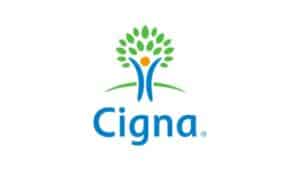“Help for Today, Hope for Tomorrow” is the National Council on Alcoholism and Drug Dependence’s motto for this year. The NCADD was founded in 1944, and since its inception, it has been the leading advocacy organization for people who are dependent on drugs and alcohol. The NCADD sponsors many great programs to help raise awareness for their cause, and one of the most popular and notable programs is Alcohol Awareness Month.
The Need for Alcohol Awareness Month
Alcohol Awareness Month is held every April. It was started back in 1987 in the hopes of reducing the stigma related to alcohol addiction. What Alcohol Awareness Month promotes is for communities to increase their attempts to reach out to the public, offering valuable education about alcohol addiction and recovery options.
Reportedly, more than 17.6 million people suffer from alcohol dependency, which is 1 in every 12 adults. Alcoholism is a chronic disease, and it can be fatal over time. However, people can recover from alcoholism to go on to lead happy, healthy lives.
A Focused Opportunity
Alcohol Awareness Month provides communities with a chance to create a focused opportunity for change. One of the ways that communities are encouraged to increase alcohol awareness is by educating the public on the effects of alcohol, causes of addiction, effective treatments for alcoholism and recovery options. Many misunderstandings and stigmas exist about the disease, and Alcohol Awareness Month is all about breaking down those barriers so that more people can come forward to seek treatment without the fear of stigma holding them back.
New Themes to Fit a Changing World
Every year, there’s a new theme for Alcohol Awareness Month. The theme is carefully thought up by the NCADD, and it’s designed to speak to the current public. The theme helps guide the entire campaign for the month, and other organizations can create their own alcohol awareness programs inspired by the theme. Many different organizations work with and alongside the NCADD to get the message across, such as Facing Addiction, which affiliates with the NCADD to provide education about alcoholism to students, churches and countless other community organizations.
Alcohol-Free Weekend, an Integral Part of Alcohol Awareness Month
One event that the NCADD sponsors every year as part of Alcohol Awareness Month is Alcohol-Free Weekend, which always takes place the first weekend in April. Throughout this weekend, the public is invited to abstain from alcohol for the 72-hour period that comprises the weekend. During that time, they can also participate in learning activities that educate them about how alcoholism affects individuals, families, businesses, and communities. If any of the participants experience withdrawal symptoms or discomfort abstaining from alcohol during Alcohol-Free Weekend, they’re urged to contact the NCADD or one of its affiliates to learn about possible treatment and recovery options.
Organization Tools for Alcohol Awareness Month
For organizations wanting to partner up with NCADD for Alcohol Awareness Month, there are plenty of tools out there designed to assist them with hosting their own alcohol education programs. One of the organization tools available is an Alcohol Awareness Month Social Media Kit. The social media kit comes complete with images organizations can post on their social media profiles and suggest captions for. It also comes complete with a suggested outline for what weeks to post the images in.
Learning How to Recognize Signs of Alcoholism
Alcohol is one of the most commonly used substances in the United States. Often, people may have an alcohol problem without even realizing it. If they don’t realize it themselves, their family members might not, either. Part of the purpose of the message of Alcohol Awareness Month is teaching people how to recognize the signs of alcoholism in themselves and others. Some of the signs of alcohol dependency include the following:
- Feeling the need to have a drink to calm feelings of nervousness
- Drinking in an effort to feel better after something bad happens
- Drinking to try to deal with feelings of guilt
- Lying about drinking habits or trying to hide them
- Causing harm to self or others when drinking
- Needing to drink greater amounts to receive the desired effects from alcohol
- Being unable to cut down or stop drinking habits
- Becoming irritable, unreasonable or resentful when unable to drink
- Having problems with relationships, health or finances caused by alcohol consumption
All of the above are warning signs of alcohol dependency. Organizations can include them in flyers and pamphlets to hand out to the public to help increase awareness.
The Effects of Alcohol on the Body
Other crucial information that organizations will want to include in their campaigns is about the effects that alcohol can have on the body. Alcohol has physical, emotional and psychological effects on those who imbibe too much. While some of the effects are short term, others are long term that could lead to serious health issues immediately or later on.
Short-Term Effects
A healthy liver is able to metabolize approximately one unit of alcohol per hour. What’s considered a unit depends on what you’re drinking. One unit of alcohol is 10 milliliters of pure alcohol. Typically, one beer is considered one drink, a small 5-ounce glass of wine is considered one drink, and a shot of spirit is considered one drink. Of course, the manner in which the alcohol was distilled and the strength of it also affect how potent the drink is along with other factors, but these are the general guidelines.
When you consume more than one unit of alcohol per hour, your blood alcohol content, or the amount of alcohol in your bloodstream, rises and leads to intoxication. Just having one to two drinks per hour can cause your BAC to rise to .05 percent. You’ll likely feel relaxed, your inhibitions will be lowered, and your judgment and reaction times will be slower but not necessarily down to dangerous levels.
However, if you drink between two and four drinks in an hour, then your BAC could rise as high as 0.08 percent, which makes you deemed legally unsafe to operate a motor vehicle. Your reflexes, judgment, and inhibitions will be slower. You’ll probably have slurred speech, and your motor skills will be slower than usual.
Once you reach this point, if you continue drinking, you’ll likely begin to exhibit more serious signs of intoxication, which include the following:
- Flushed skin
- Slurred speech
- Stumbling
- Loss of coordination
- Trouble with concentration
- Lowered brain activity
- Drowsiness
- Dilated pupils
- Mood swings
- Raised blood pressure
- Increased heart rate
- Lower body temperature
- Irregular breathing
- Vomiting
- Passing out
Once your BAC level reaches .20 percent, you’ve generally considered a danger to yourself. When it reaches.30 percent, you’re at risk of accidentally choking, falling or otherwise injuring yourself; if it gets as high as .35 percent, that’s considered the same level as that of having been administered local anesthesia. People whose BAC reaches .40 percent are in serious danger of suddenly dying.
Binge Drinking Can Lead to Alcohol Poisoning
Alcohol poisoning is a severe condition that can occur after binge drinking or after your BAC reaches .15 percent. Binge drinking is classified as drinking five or more drinks in the span of a two-hour period. If you continue to drink after binge drinking and reaching a BAC of .08 percent, then your BAC only continues to rise that much faster, which could cause you to experience alcohol poisoning. Alcohol poisoning occurs when there is too much alcohol in the bloodstream for the liver to metabolize, and it can lead to life-threatening side effects, such as the following:
- Confusion
- Slow or irregular breathing
- Nausea or vomiting
- Hypothermia
- Unconsciousness
- Cyanosis
- Memory loss
- Seizures
If you’re experiencing any symptoms of alcohol poisoning, you likely won’t be conscious enough to dial 911, but if you are, you should definitely do so. Likewise, if you see anyone who you think is experiencing symptoms of alcohol poisoning, calling for help could save his or her life.
Long-Term Effects
While drinking too much in too short a time period can cause acute, life-threatening problems, drinking too much over a longer period of time causes some serious health issues as well. Regardless of whether you binge drink or consume alcohol steadily over the course of many days or years, drinking too much alcohol over a period of time could lead to chronic long-term health issues. These health issues can be both physical and mental.
Alcohol could cause you to develop liver damage, cardiovascular disease, and even cancer. The liver is one of the most likely organs to be damaged by alcohol consumption. The liver is the organ responsible for metabolizing alcohol, so it only makes sense that the more alcohol you consume, the harder your liver has to work to filter it all through your system. Overworking the liver can cause it to become damaged and inflamed or scarred, which could lead to cirrhosis, alcoholic hepatitis, fatty liver disease or liver cancer.
Consuming great amounts of alcohol can also cause problems with your digestive tract and pancreas. It can cause problems with your sugar levels since alcohol breaks down to pure sugar, putting you at greater risk for developing diabetes.
Too much alcohol consumption also puts a strain on your heart and lungs. It could lead to higher blood pressure, irregular heartbeat, stroke, blood clots, heart attacks, and breathing difficulties. It can even affect your reproductive health over time, making you less fertile than you would have been otherwise, and it can affect the regularity of a woman’s menstruation cycle.
Mental Issues Caused by Drinking
Substance use is a type of mental disorder in and of itself. It can also cause you to have other mental disorders; in some cases, it might actually be fueled by underlying mental issues that you didn’t know you had and that you were unconsciously trying to self-medicate. Depression, anxiety, schizophrenia and bipolar disorder are all mental conditions that could trigger alcohol use disorder. On the flip side, consuming too much alcohol could cause you to experience more anxiety and stress, triggering depression or anxiety disorder.
How Alcohol Affects the Brain
Alcohol greatly affects the way the brain functions. It triggers the release of neurotransmitters like serotonin and dopamine, both of which make you feel good. This could present a problem in people who drink to try to escape or feel better. Drinking too much, though, can eventually lead to depression and cause you to experience dementia-like symptoms, such as memory loss, blacking out and having trouble forming new memories.
Options for Recovery
All the above information can be included in information packets or taught in Alcohol Awareness Month classes or presentations. Once the public has been presented with information to help them know the signs of alcohol use and its harmful side effects, organizations will also want to make sure that they provide plenty of recovery options for people who want to seek help for themselves or others who they think are suffering from alcohol addiction. Recovery options can be given in the form of assistance finding treatment facilities, a list of helpful numbers or countless other resources.
Alcohol Awareness Month is a great way for community organizations to help clear up some of the stigma associated with alcohol use. It also helps encourage people who want to seek help to get it without fear of being branded with negative connotations.











